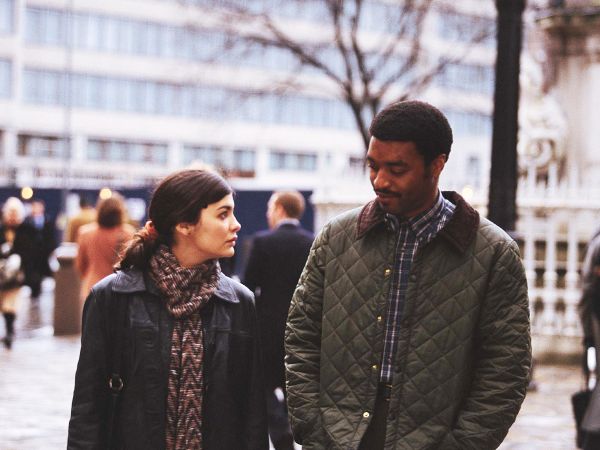In this analysis, I am going to be focusing on how and why
the director creates meaning by her use of themes and micro-features: cinematography,
sound, Mise-En-Scene, performance and editing.
The Selfish Giant is a 91 minute, social-realism, crime
drama directed and written by Clio Barnard and produced by Tracy O’Riordan. It
was produced on the 25th October, 2013 in the UK. It is based upon a novel of
the same title which was written by Oscar Wilde. Clio Barnard has also directed
a film called ‘The Arbor’ which was filmed in Bradford which is the same
filming location as The Selfish Giant. I personally believe that this film is
aimed at teenagers who are aged fifteen and above because it is very intense
and we are introduced to a vulnerable world, drowning in poverty, that we may
not normally see or hear about and Clio Barnard does an excellent job of
displaying the brutal realities of such a world and not at any point does she
shy away from showing us these realities. The film stars Conner Chapman
(Arbor), Shaun Thomas (Swifty- Arbor’s best friend), Sean Gilder (Kitten- the
scrap dealer the two boys meet), Rebecca Manley (Michelle ‘Shelly’ Fenton-
Arbor’s Mother) and Elliott Tittensor (Martin Fenton- Arbor’s older brother).
It is about two thirteen year old friends, Arbor and Swifty, both from families
struggling to make a living, who come across a scrap dealer named Kitten and
from there on, get involved with the dangerous life of scrap-dealing in order
to provide money for their families, which, towards the end, leads to tragic
consequences.
Clio Barnard

(Spoiler Alert) The film has the themes of: family, friendship, class, desperation, determination, theft, greed,
anger, betrayal, jealously and survival.
Arbor is greatly dependent on his
tablets that help to prevent his outbursts. The audience realise that he has to
take medication when his Mother asks him “have you taken your tablet?” during
an argument in which Arbor is becoming extremely angry, which suggests that he quite probably has ADHD. Family is a theme because deep down,
Arbor clearly has a very close relationship with his Mother and Clio Barnard
shows this by the meaningful scenes which feature them hugging and comforting
one another. Also, it becomes known that Arbor and Swifty’s main priority is to
earn money in order to support their financially deprived families and the audience realise this in a scene during the earlier
stages of the film in which the two boys earn quite a large amount of money and
instead of spending it on themselves, they plan to spend it on the electricity
bill and a new sofa, which was very un-selfish of them. This therefore confirms
that the title ‘The Selfish Giant’ does not refer to either of them but in fact
is referring to Kitten because all he wanted was to make a large profit from
the scrap the boys were collecting and he was not at all concerned about the
extreme danger they were both put in. Arbor and Swifty have a very strong friendship and the audience discover
this almost immediately in the opening scene in which Swifty is calming Arbor
down and a close up is used to show their hands interlocked. Clio Barnard
purposely used this shot to represent the tight bond between the two of them and
their hands stay interlocked to show how they will always be there for one
another which gives the audience false hope that they will stay together
throughout the film and will not leave each other’s side. As the film develops,
Swifty takes a great interest in horses and appears to be very natural when
handling them whereas Arbor does not share this talent and is more interested
in collecting as much scrap as possible. Kitten then begins to favour Swifty
because of this, leaving Arbor feeling betrayed
and jealous. There was a
particular shot that stood out for me which displays these themes which is a
wide shot of Kitten and Swifty standing next to one another as Arbor is stood
away from them, Barnard included this shot in the film to represent how Arbor
feels as if he is being torn apart from them because ‘he is not good enough’,
despite how hard he tries. Arbor then becomes more and more greedy and desperate to make money and dangerously steals scrap including off Kitten himself which gets him into a large
amount of trouble and he is threatened to have his hands put through the wire
cutting machine. The Selfish Giant does not focus on Arbor and Swifty trying to
escape from the poverty they are surrounded by, like the protagonist in ‘Fish
Tank’, but it focuses on them trying to
survive in such an economically demanding world.

Throughout ‘The Selfish Giant’, I noticed that there were
many still, long-lasting establishing shots of the countryside which showed
sheep and horses. This was an area that appeared safe and peaceful, in which
the protagonists could escape to in order to be away from the rough, loud,
urban environment they were forced to survive in. However, after these establishing
shots, the camera would suddenly cut to the shots showing the scrap yard and
the noisy, dangerous machines within it which dramatically contrasted with what
the audience previously saw. I personally believe that this was to show how
working in a scrap yard was extremely risky and dangerous and to emphasize how
the way in which Arbor and Swifty made money to support their families was not
pleasant at all. Clio Barnard may have used this contrast to clearly separate our
expectations from the realities: we expect that thirteen year old boys, like
Arbor and Swifty, to be attending school and living a peaceful life in which
they feel safe and have a sense of belonging; these expectations are shown by
the establishing shots of the countryside. However, in reality, Arbor and
Swifty are constantly putting themselves into large amounts of danger in order
to support their families and the only place they feel as if they ‘belong’ to
may be the scrap yard in which they work in because they were excluded from
school and have quite an un-settling family life. Barnard makes it clear that
they do not lead the ‘ordinary’ life that is expected of them so keeps the
narrative ‘real’ the whole way through to inform the audience that there are no
‘happy endings’ in such a poverty and danger-driven world. I also believe that
the establishing shots were used in order for the audience to reflect on what
had happened because they were usually shown after an event had occurred and
Clio Barnard clearly did not want to cut straight into another ‘busy’ scene and
instead wanted to give the audience thinking time. Additionally, there was
foreshadowing of the ending by the use of the shots which showed the
electricity wires and this was maybe to inform the audience that a key event
was going to take place there although when Swifty was electrocuted when
helping Arbor to steal underground cable, it was very unexpected and the
audience may not have expected such a brutal ending to their friendship.

I thought that Mise-En-Scene played an important role in the
film and I thought that the use of weather was very clever. Throughout the majority
of the film, the weather was dull and gloomy; the days were rarely sunny,
giving the impression that it was quite cold. This was to represent how the
protagonists did not lead a ‘blissful’ life but the complete opposite as they
were constantly surrounded by negativity. After Swifty passed away, the weather
gradually got worse and Arbor is shown sitting outside Swifty’s house in the
pouring rain which can have many interpretations. Firstly, Clio Barnard has
made use of the rain to represent how Arbor can never have a bright or happy
day again now Swifty has disappeared from his life and the rain is a symbol of
Arbor’s immense sadness so he is reflecting on what has happened. Secondly,
Arbor is constantly outside Swifty’s house in the rain because he feels guilty
and is blaming himself entirely for his death. Another key symbol throughout
the film is the horses which are often shown being used for the benefit and entertainment of others and are put into extremely
dangerous situations such as horse racing on busy roads. I believe that this
represents how Kitten was using Arbor
and Swifty for his own benefit because he was willing to put them in large
amounts of danger in order to make money for himself and to support his
scrap-dealing business.

The performances were truly stunning and incredibly
believable and the performance from Conner Chapman, who played Arbor, really
stood out for me because he was very natural and his acting did not seem at all
forced. The scenes in which he was hugging his Mother were very emotional
because it showed how much he cared for her and it is almost as if he is taking
on the role of a Father because he is looking after her and trying his up-most
hardest to support her. My favourite scene was the one towards the end of the
film in which Arbor is lying underneath the bed, just like at the beginning, but
instead, his older brother is talking to him rather than Swifty. However, it
then shows Swifty in the same place he was in during the opening scene because
Arbor is remembering him which emphasizes how much he misses him. There is then
the same close up which shows their hands interlocked but this time, they let
go and Clio Barnard purposely did this to represent how Swifty has left Arbor
and is no longer there for him. There was very limited dialogue during this
scene and the ones that followed it because the performances and cinematography
were more than enough to create meaning and it also gave the audience time to
reflect on the film.

Overall, I really enjoyed ‘The Selfish Giant’ because it was
gritty, realistic and kept me gripped the whole way through. The narrative was
strong, believable and reached a dramatic and unexpected climax at the end. The
micro-features within the film were outstanding and I believe that Clio Barnard
has created a fantastic and meaningful piece of work.
































